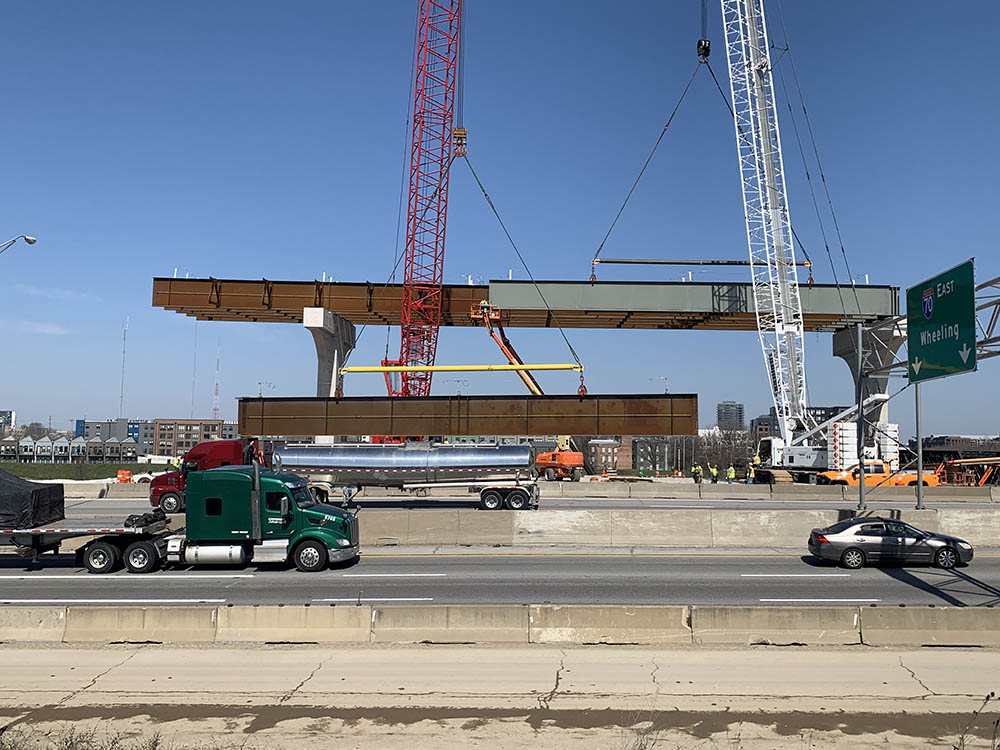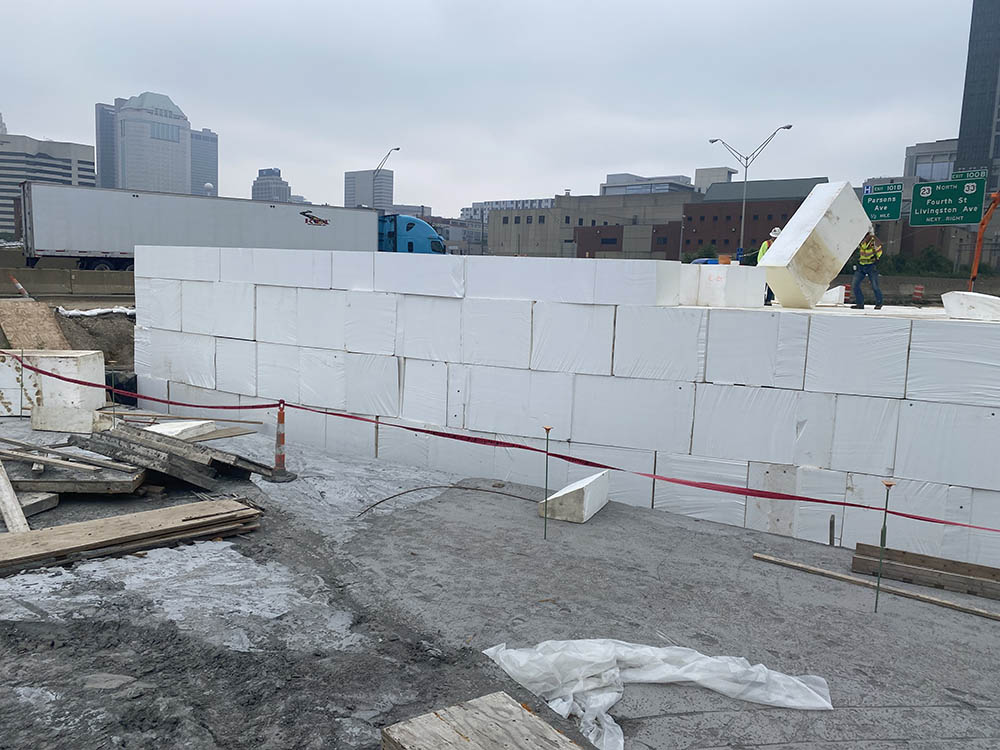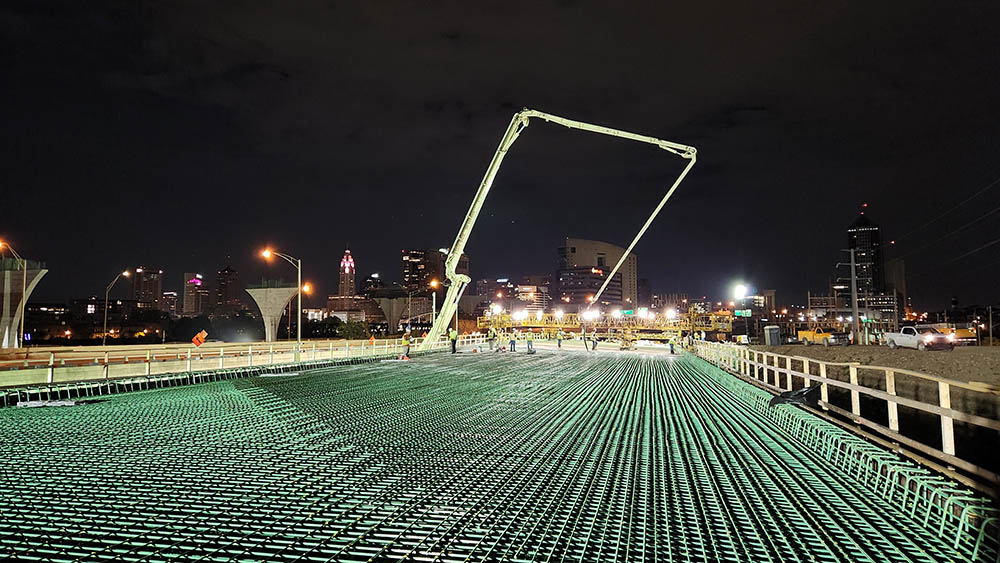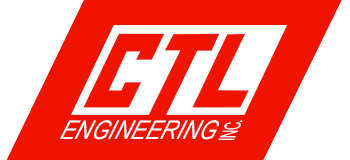CTL Engineering’s Role in Transforming the Heart of Columbus
If you live in Columbus, Ohio, you’ve likely followed the progress of the massive I-70/I-71 Interchange reconstruction downtown. Spanning years of planning and phased construction, the project has captured public attention due to its scale and central location. But what many don’t see is the complex, behind-the-scenes work that keeps a project like this moving forward—work that CTL Engineering has been central to.
Led by Mitch McCluskey, CTL’s team has served as one of the construction administration and inspection consultants supporting ODOT’s efforts on this high-profile endeavor. As McCluskey puts it, “This is one of those career-defining projects where just about every challenge in urban infrastructure comes into play.”
Understanding the Project
The I-70/I-71 Interchange project is a multi-phase reconstruction initiative aimed at alleviating one of Ohio’s most congested traffic choke points. With a current contract value of approximately $288 million, the project includes the complete reconfiguration and expansion of ramp systems connecting I-70 eastbound into downtown Columbus, as well as I-70 westbound to I-71 southbound.
The changes go far beyond moving cars more efficiently. They’re intended to improve safety, reduce weaving, and reconnect neighborhoods divided by previous highway expansions—most notably by enhancing pedestrian access between German Village and downtown Columbus.
At the core of the work are massive civil structures, including what will soon be one of the longest bridges in the state: a 4,700-foot ramp carrying westbound I-70 traffic onto southbound I-71. This structure crosses multiple highways, rail lines, and the Scioto River, and is expected to tower 80 to 100 feet above ground level at its peak.

CTL’s Role: Engineering the Day-to-Day
As construction engineer, McCluskey is part of a hybrid team working side-by-side with ODOT engineers and other consultants. His team includes three field inspectors and a documentation clerk, with CTL staff embedded on-site since early 2022. Their work involves oversight of inspections, ensuring contractor conformance, navigating utility coordination, managing plan changes, and maintaining clear communication with a web of stakeholders.
“On any given day,” McCluskey explains, “you’re dealing with two railroad companies, a juvenile detention center, a city park, multiple utility companies, and a substation that’s literally in the middle of the new ramps. It’s like an entire city’s worth of coordination on one jobsite.”
The Real-World Puzzle of Utility Coordination
One of the toughest challenges? Navigating the tangle of underground utilities and old infrastructure hidden beneath downtown streets.
Mound Street, in particular, became something of an archaeological dig. “We found foundations from old bridges, utilities from the 1800s, and things no one had records of,” says McCluskey. “Sometimes you’d uncover something and just start calling around asking, ‘Is this yours?’”
That process of discovery and adaptation became routine. In some cases, CTL had to help re-engineer alignments in real-time to avoid abandoned or undocumented infrastructure. In others, they facilitated conversations between contractors and utility providers to decide whether lines could be moved, decommissioned, or simply worked around.
Building Bridges Over Active Rail
Another highlight of CTL’s involvement came with the construction of the major westbound-to-southbound ramp bridge—specifically, the segment spanning two active railroad lines. With freight traffic continuing around the clock, CTL helped coordinate lift windows for bridge beams with razor-thin margins.
“We were essentially threading a needle—getting three-hour windows with no trains, working with two rival railroad companies, and lifting beams with cranes on live railroad property,” says McCluskey. “Eventually, we found a rhythm working 3 PM to 3 AM, but it took a lot of trial and error.”
Lightweight Solutions for Heavy Problems
In one of the more unusual challenges, CTL helped manage installation of lightweight fill materials to protect an aging 1800s-era brick sewer line buried beneath the project site. The brick construction—never intended to bear modern vehicle loads—required a careful solution that didn’t involve full replacement.
Instead, the team utilized massive Styrofoam-like blocks known as geofoam. These four-foot cubes were stacked like oversized Legos to create a lightweight yet strong base under the new road. For deeper fills near the floodplain, the project used cement cellular fill (CCF), a special low-density concrete that flows easily but weighs less than water.

“These products let us build above sensitive infrastructure without damaging it,” says McCluskey. “Replacing that sewer would have been tens of millions of dollars. This approach saved significant time and cost.”
Integrating Streetscapes and Public Space
Beyond the highway itself, the project also includes a sweeping streetscape upgrade for downtown Columbus. Mound Street and other local roads are being rebuilt with upgraded lighting, granite curbs, brick sidewalks, plantings, and improved crossings—elements designed to support Columbus’s urban vision for a more connected, walkable city.
One of the project’s more innovative urban design features is a planned park integrated into the Front Street bridge. The structure will include landscaping, trellises, seating, and other pedestrian-friendly amenities aimed at reconnecting German Village with downtown.

Why CTL?
While much of the work involves technical precision, McCluskey notes that it’s CTL’s collaborative approach that has made the greatest difference. Rather than siloing responsibilities between different consultant teams, CTL worked closely with other firms—especially American Structurepoint, the second prime consultant on the project—to function as a unified extension of ODOT.
“There’s never been a ‘that’s not our job’ attitude,” says McCluskey. “We’ve all worked as one team, and I think that’s why we’ve been successful in keeping the project moving, even with major challenges.”
That collaborative mindset, along with deep expertise in managing large-scale infrastructure projects, is what continues to set CTL apart—particularly on a project where millions of dollars, multiple jurisdictions, and thousands of travelers intersect daily.
Looking Ahead
With an original completion date delayed due to supply chain issues—particularly a shortage of electrical transformers affected by global events—the current projected end date is August 2026. Still, CTL’s proactive problem-solving, creative field solutions, and steady coordination efforts have helped minimize additional delays.
And while Columbus residents may not know CTL by name, their work is quite literally supporting the foundation of one of the region’s most ambitious transportation upgrades.
